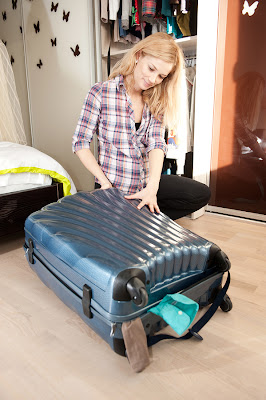Few opportunities fill us with as much trepidation as accepting a position that involves living abroad. Once the initial excitement fades, we become suddenly aware of how huge the task before us is, full of unknowns and uncertainties. Daunting though it may seem at first, however, moving abroad is easily one of the most rewarding challenges life has to offer, and with a little foresight, you can make the transition to a new home in a foreign country with assurance, poise, and equanimity. Here are a few tips to remember if you’re considering making the jump:
(1) (1) Get your paperwork sorted early.
Nothing disrupts your peace of mind like having your visa or work authorization hanging in the balance, and dealing with foreign immigration offices is seldom a straightforward process. Often as not, I’ve found myself sprinting from office to office seeking a last-minute stamp or seal of approval on my documents that was never mentioned but is apparently required. Medical examinations, official notarizations, background checks, and lots and lots of passport-sized photos are usually a part of the process, and your application is virtually guaranteed to take more visits than you anticipated. If there’s an element in your application that may take extra time to fulfil, plan to get started with it well ahead of the deadline.
(2) Learn cultural taboos and politeness norms.
As a foreigner, one is typically presumed a free pass for the odd cultural faux pas, but knowing the basics of how to act in a society will go a long way towards making your transition a smooth one. While guidebooks are full of spurious cultural tips (for example the old piece of wisdom that “thumbs up is a rude gesture in Australia!”), there are certain bits of basic etiquette that are broadly applicable. Not eating or shaking hands with the left hand in Muslim and Hindu cultures, giving and receiving objects using both hands in East Asia, and not wearing shoes into the home in Japan or Korea, for example, are all simple bits of decorum that are easy to learn and easy to observe. People are almost always happy to explain, so when unsure, just ask!
(3) Make your new place “home”.
The places we call home are as much a set of memories and habits as they are a physical location. As such, bringing objects of personal significance into your new living space will go a long way toward making it feel like a home. Decorating with photos of friends and family, a favourite piece of art, or a familiar bedspread are all easy ways of making your new digs seem less foreign. Likewise, don’t abandon your daily customs just because you’re in unfamiliar territory. Whether you’re into yoga, running, cooking, or cinema, continuing to do what you enjoyed back home always makes the transition to your new life less jarring, and is usually an excellent way to meet people.







